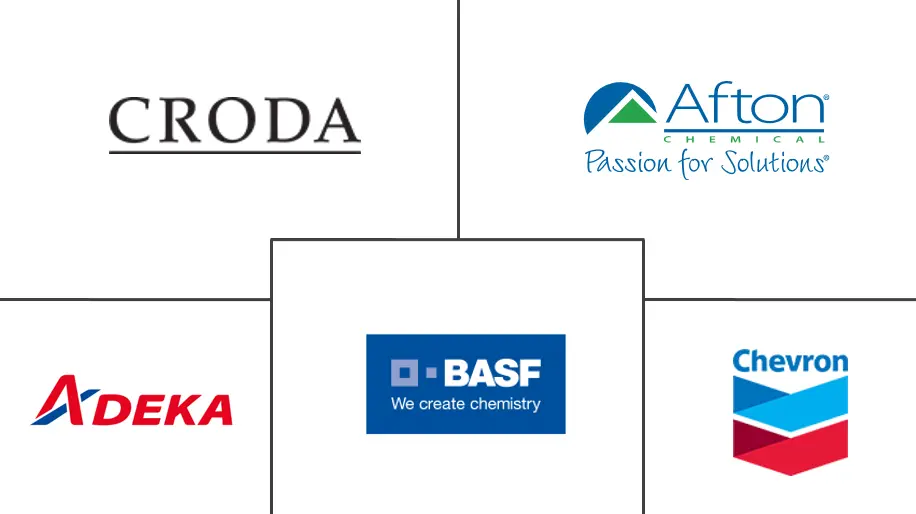Friction Modifiers Market Size and Share
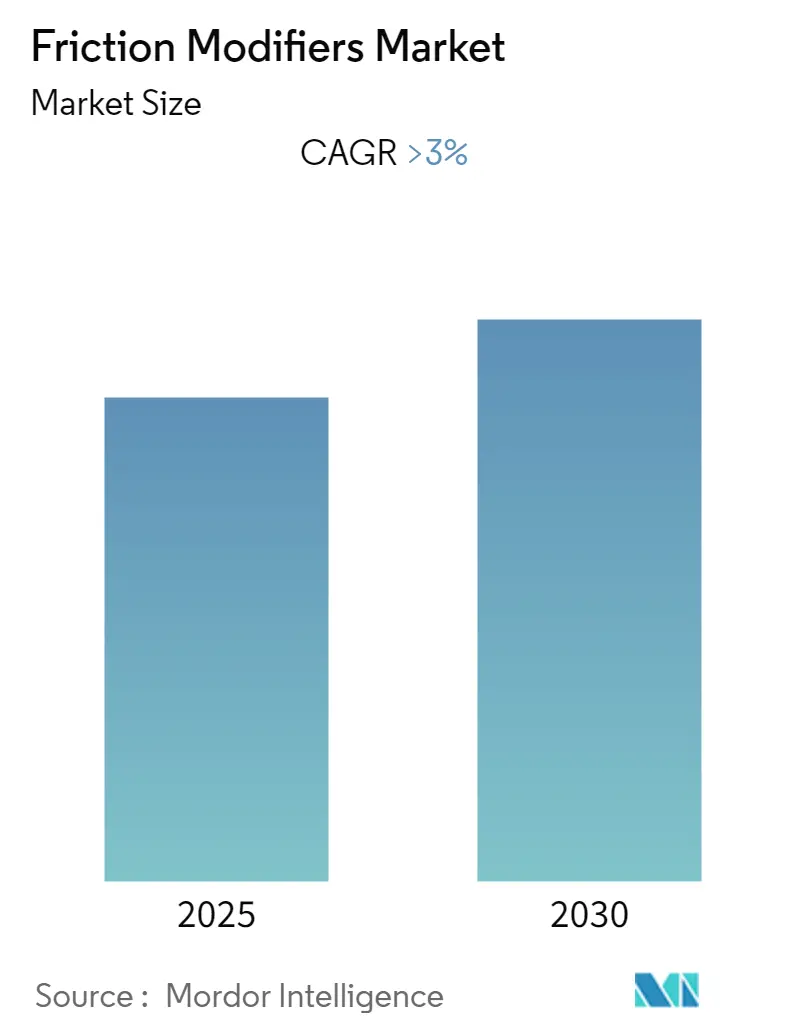
Friction Modifiers Market Analysis by Mordor Intelligence
The Friction Modifiers Market is expected to register a CAGR of greater than 3% during the forecast period.
The market was negatively impacted by COVID-19 in 2020. Friction modifiers are additives that are mainly used in lubricants of the automotive industry. Owing to the pandemic scenario, the passenger air traveling facility was temporarily stopped during the lockdown, and even after the lockdown, people were not opting to travel frequently through airlines or personal vehicles. Thus, this led to a decrease in the consumption of aviation lubricants, as well as automobile lubricants, which, in turn, negatively impacts the demand for lubricant additives like friction modifiers.
- Over the short term, increasing applications for fuel-efficient lubricants are expected to drive the market's growth.
- The declining automotive industry, growing usage of electric vehicles, and the negative impact of the COVID-19 pandemic are expected to hinder the market's growth.
- The Asia-Pacific region is expected to dominate the market, and it is also likely to witness the highest CAGR during the forecast period.
Global Friction Modifiers Market Trends and Insights
Increasing Usage in the Industrial Sector
- Friction modifiers are additives that are commonly used in lubricant applications to reduce the coefficient of friction and improve lubricity and energy efficiency in machines.
- Friction modifiers are also called boundary lubrication additives. Esters, fatty acids, and other solid materials such as graphite and molybdenum are used for friction reduction purposes.
- Inorganic friction modifiers are in high demand and are being used for different industrial applications. According to the National Bureau of Statistics of China, Chinese industrial production was increased by about 2.4% in 2020 compared to the previous year. Furthermore, the industrial production was increased by 7.3% year-on-year in December 2020, following an increase of 7% year-on-year in the previous month, thus led to an increase in the demand for friction modifiers for various industrial applications.
- Friction modifiers are added to lubricants that are being used in internal combustion engines and transmissions. Key applications of friction modifiers include automatic and manual transmissions, hydraulic systems, shock absorbers, and metalworking applications.
- Friction modifier properties help in reducing friction and increase fuel efficiency, and it can also prevent metal scoring, reduce engine wear and noise, and help to prevent micropitting of metal surfaces when used in industrial gear lubricants.
- In 2019, the mining, quarrying, and manufacturing sector of 27 member countries of the European Union (EU-27) accounted for total production sales of about USD 5,915.87 billion. The annual average industrial production for the year 2020, compared with 2019, fell by 8.7% in the euro area (EU-16) and by 8% in the EU (EU-27).
- The impact of the COVID-19 in every region led to a shutdown in production and manufacturing units. Due to this, there is an estimated decrease in the usage and demand for friction modifiers from different sectors in recent times.
- Therefore, the aforementioned factors are expected to show a significant impact on the market in the coming years.
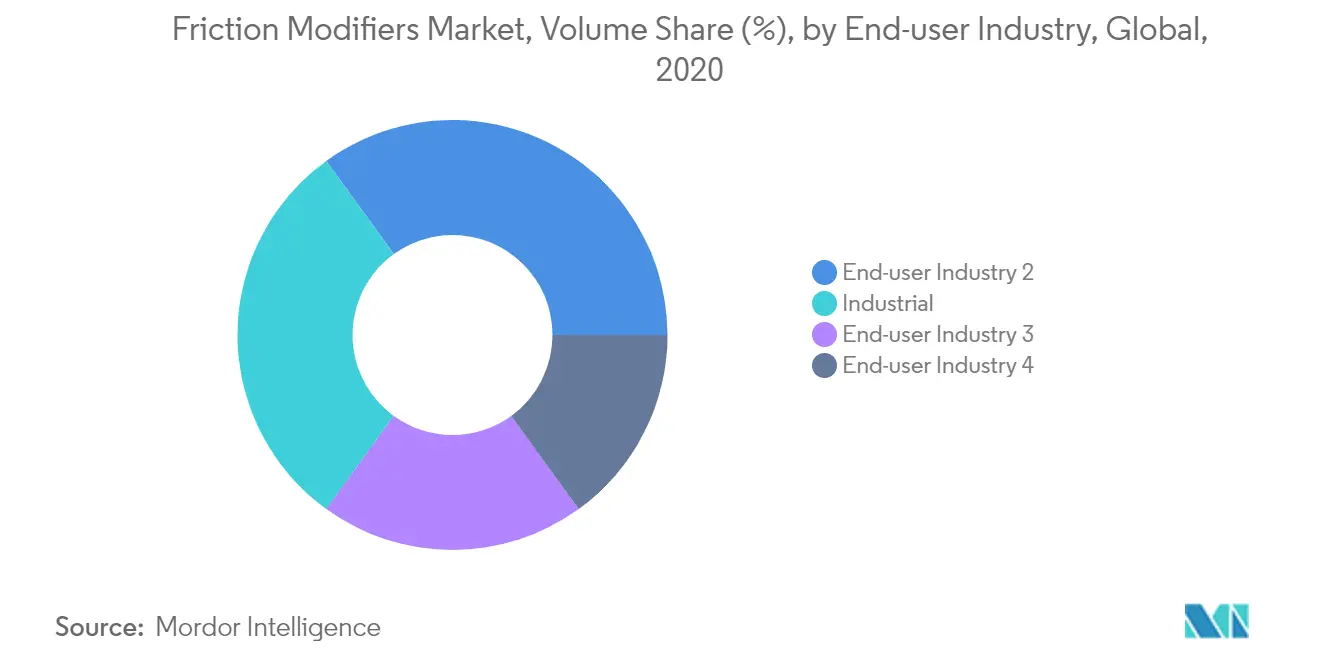
Asia Pacific Region to Dominate the Market
- Asia-Pacific is expected to dominate the global market owing to the highly developed automotive sector in China, India, and Japan, coupled with the marine and industrial sectors in the region in recent years.
- Asia-Pacific is the largest lubricant consumer in the region and the world, followed by Europe. The outbreak of COVID-19 has affected the economic growth of all the countries at present, as almost all the manufacturing and service sectors have been halted due to lockdown.
- The expansion of the marine industry in Asia-Pacific is expected to increase the demand for friction modifiers. According to Marine Insight, South Korea, China, and Japan are leading countries in the production and usage of various ships for different purposes.
- According to the OICA, Asia-Pacific dominated global automobile production in recent years. China is the largest producer of automobiles globally, with a production volume of 25.75 million vehicles in 2019 and reached 25.23 million vehicles in 2020, registering a decline rate of about 2%. Thus, this led to a slight decrease in the consumption of lubricants, which, in turn, negatively impacts the market demand for friction modifier additives.
- Friction modifiers also help the aerospace sector in increasing fuel efficiency. The aerospace industry in Asia-Pacific witnessed decent growth in the previous years. Due to this, there was more usage of friction modifiers in this region. According to Boeing, about 25% of world air travel is flown within Asia as of the year 2019, and it is forecasted that the value will change to 35% of world total air travel in the next two decades, contributing the highest share of intra-regional air travel globally. The Asia-Pacific region will get 17,390 deliveries of new airplanes in the next two decades (between 2019 and 2038), which will increase the total number of airplane fleets to 19,420.
- Indian domestic scheduled airlines carried 63 million passengers in 2020, with a decline rate of 57% compared to the previous year.
- Therefore, the aforementioned factors are expected to show a significant impact on the market in the coming years.
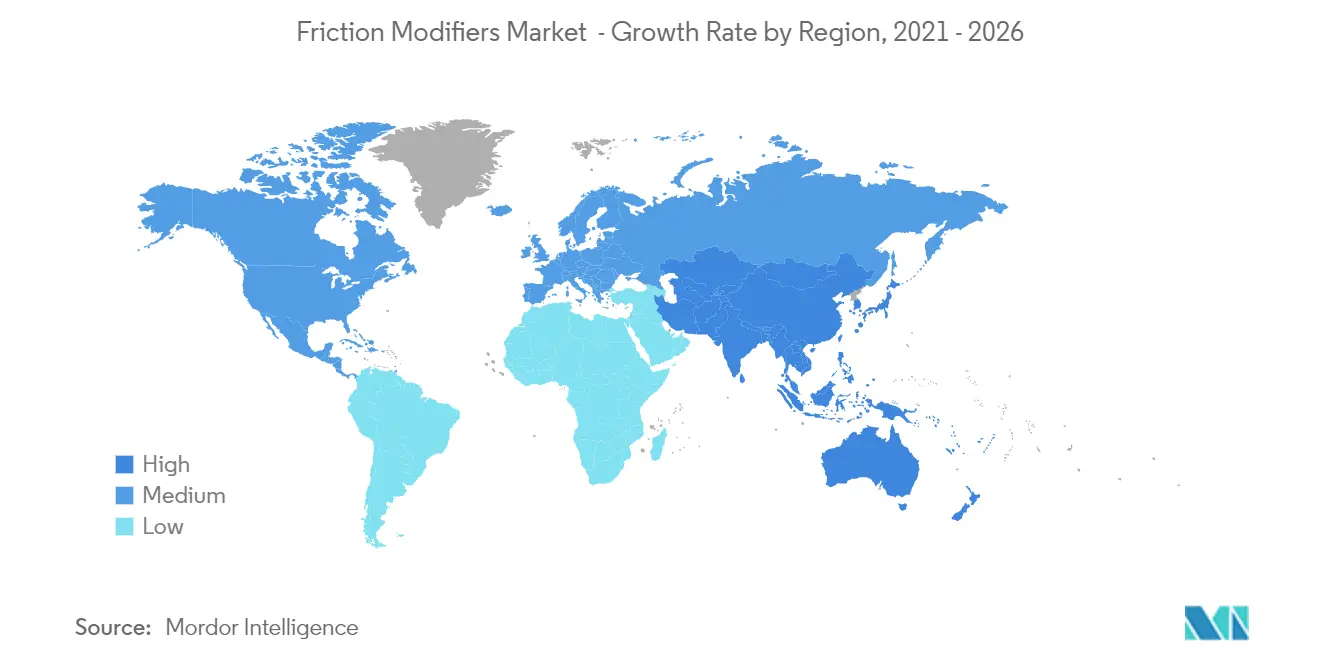
Competitive Landscape
The friction modifiers market is partially consolidated in nature, with few major players competing in the market. Some of the major companies are BASF SE, Croda International PLC, Afton Chemical, ADEKA CORPORATION, and Chevron Corporation, among others.
Friction Modifiers Industry Leaders
-
BASF SE
-
Croda International Plc
-
Afton Chemical
-
ADEKA CORPORATION
-
Chevron Corporation
- *Disclaimer: Major Players sorted in no particular order
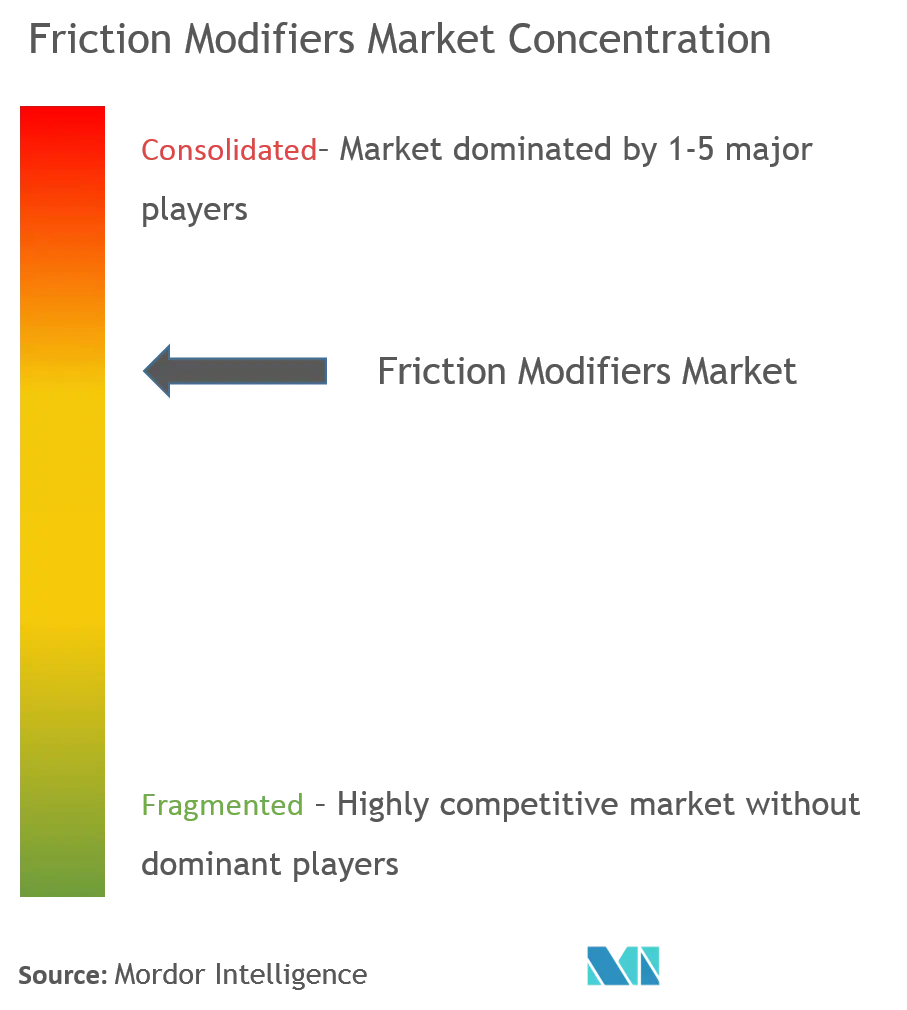
Recent Industry Developments
- In January 2021, Royal Dutch Shell PLC and Whitmore Manufacturing LLC, a wholly-owned subsidiary of CSW Industrials, Inc., announced a definitive agreement to form a joint venture, Shell & Whitmore Reliability Solutions LLC, to market, distribute, and sell lubricants, friction modifiers, greases, and other reliability products, and related industrial services to the North American rail and US mining sectors.
- In July 2019, Croda International Plc announced the acquisition of Rewitec GmbH, a manufacturer of friction and wear-reducing lubricant additives. Thus, this, in turn, enhances the company's product portfolio and expanding the additives business.
Global Friction Modifiers Market Report Scope
Friction modifiers are anti-wear additives used to minimize the friction between two contact surfaces with the modification in the coefficient of friction. A friction modifier molecules contain two different parts, one is the polar head which attaches itself to the metal surfaces, and the other is a soluble oil tail. Apart from reducing friction, they can also act as corrosion inhibitors and antioxidants. The friction modifiers market is segmented by type, end-user industry, and geography. By type, the market is segmented into organic and inorganic. By end-user industry, the market is segmented into automotive, industrial, marine, and other end-user industries. The report also covers the market size of and forecasts for the friction modifiers market in 15 countries across major regions. For each segment, the market sizing and forecasts have been done on the basis of volume (kilo tons).
| Organic |
| Inorganic |
| Automotive |
| Industrial |
| Marine |
| Other End-user Industries |
| Asia-Pacific | China |
| India | |
| Japan | |
| South Korea | |
| Rest of Asia-Pacific | |
| North America | United States |
| Canada | |
| Mexico | |
| Europe | Germany |
| United Kingdom | |
| Italy | |
| France | |
| Rest of Europe | |
| South America | Brazil |
| Argentina | |
| Rest of South America | |
| Middle-East and Africa | Saudi Arabia |
| South Africa | |
| Rest of Middle-East and Africa |
| Types | Organic | |
| Inorganic | ||
| End-user Industry | Automotive | |
| Industrial | ||
| Marine | ||
| Other End-user Industries | ||
| Geography | Asia-Pacific | China |
| India | ||
| Japan | ||
| South Korea | ||
| Rest of Asia-Pacific | ||
| North America | United States | |
| Canada | ||
| Mexico | ||
| Europe | Germany | |
| United Kingdom | ||
| Italy | ||
| France | ||
| Rest of Europe | ||
| South America | Brazil | |
| Argentina | ||
| Rest of South America | ||
| Middle-East and Africa | Saudi Arabia | |
| South Africa | ||
| Rest of Middle-East and Africa | ||
Key Questions Answered in the Report
What is the current Friction Modifiers Market size?
The Friction Modifiers Market is projected to register a CAGR of greater than 3% during the forecast period (2025-2030)
Who are the key players in Friction Modifiers Market?
BASF SE, Croda International Plc, Afton Chemical, ADEKA CORPORATION and Chevron Corporation are the major companies operating in the Friction Modifiers Market.
Which is the fastest growing region in Friction Modifiers Market?
Asia Pacific is estimated to grow at the highest CAGR over the forecast period (2025-2030).
Which region has the biggest share in Friction Modifiers Market?
In 2025, the Asia Pacific accounts for the largest market share in Friction Modifiers Market.
What years does this Friction Modifiers Market cover?
The report covers the Friction Modifiers Market historical market size for years: 2019, 2020, 2021, 2022, 2023 and 2024. The report also forecasts the Friction Modifiers Market size for years: 2025, 2026, 2027, 2028, 2029 and 2030.
Page last updated on:
Friction Modifiers Market Report
Statistics for the 2025 Friction Modifiers market share, size and revenue growth rate, created by Mordor Intelligence™ Industry Reports. Friction Modifiers analysis includes a market forecast outlook for 2025 to 2030 and historical overview. Get a sample of this industry analysis as a free report PDF download.
